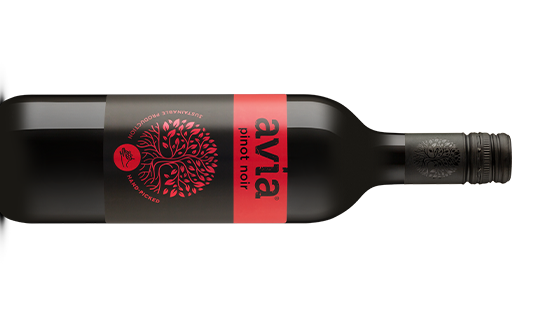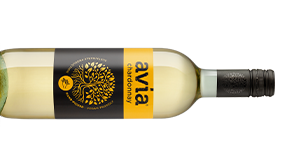Choosing the right sparkling wine
Any celebration is incomplete without a good sparkling wine. The most important moments of our lives are commemorated with a glass of sparkling wine in our hand.
We drink sparkling wines to celebrate a birth of a child, a graduation, a wedding, to mark special milestones, to start a new year, a new job, or a new decade.
December is the month of joy and social gatherings, the month when we come together with our loved ones, our family, friends, and co-workers, to end the year on a high note. At these gatherings, the right sparkling wine can be the icing on the cake.
If you want to learn how to choose the right sparkling wine and serve it in style to impress your guests, here are some tips to make your bubbles truly sparkle.
Charmat or classic sparkling wine?
It depends on what budget you have and who you are hosting. Classic sparkling wines tend to be more expensive, as it takes at least two years, often even longer, to make them. The classic method of producing sparkling wines requires the wine to be fermented twice, the second time in the bottle where the sparkling wine is in constant contact with lees.
Classic sparkling wines have a more complex aromatic profile and fine bubbles – they are perfect for more demanding wine lovers.
Sparkling wines produced with charmat or tank method mature in stainless steel vessels for just a few months. They are more affordable and tend to have fruity notes. They can be appreciated by a wider range of consumers.
Clinking glasses, yes or no?
Although opinions on this matter differ, we generally do not clink glasses when drinking sparkling wine. You simply raise your glass, look the person you are toasting with in the eyes, and take a sip. Is this rule carved in stone? Of course not.
How to serve and taste sparkling wine?
To showcase its qualities to the fullest, sparkling wine is to be served at 6 °C. Before serving it, you should leave it in the refrigerator for a few hours to cool. Do not keep it in the freezer, as sparkling wine is extremely sensitive to changes in temperature.
Ideally, you should drink sparkling wine from a glass that allows you to observe the bubbles. We recommend using tulip glasses with an effervescent point notched in the bottom, which accelerates the flow of bubbles. Remember, the better the sparkling wine, the smaller the bubbles are and the longer the foam lasts.
We always drink sparkling wine as an aperitif, as it prepares our taste buds for the more intense flavours of our food. We can enjoy it alone or alongside refreshments. However, we should avoid serving sparkling wine with desserts, unless we are having a sweet sparkling wine, in which case the wine needs to be sweeter than the dessert.
Wine at weddings
Aperitif
We always recommend serving sparkling wine as aperitif. If you are looking for something fresh and affordable, you cannot go wrong with Sparkling Rebula. If, however, you want nothing but the best for you special day, we recommend choosing one of our Bagueri sparkling wines.
Main courses
White meat is nicely complemented by white, fresh, fruity, and mineral wines from our Avia line (Chardonnay, Pinot grigio, and Sauvignon Blanc), while red meat goes perfectly with our red Avia wines (Merlot, Cabernet-Sauvignon, and Pinot noir). More complex dishes call for more mature wines, aged in wood, such as our white or red wines Bagueri Superior.
Vegetarian dishes
With vegetarian dishes, we recommend serving Krasno White, a blend of Rebula, Sauvignonass, and Chardonnay.
Fish main courses
Fish goes perfectly with Villa Brici Ribolla Gialla sl. Rebula, Avia Pinot Grigio and Chardonnay, or Krasno White blend.
Desserts
You should always serve desserts with sweet wines, such as Sweet Avia.
Chardonnay – a true classic
Chardonnay is a variety that suits different wine styles. It is one of the few white varieties that can have either partial or full lactic acid fermentation (LAF), which contributes to a distinctive aroma of the wine. LAF is a process in which lactic bacteria convert wine acid into lactic acid, giving the wine a softer and more rounded buttery taste.
More or less complex?
Chardonnay is commonly produced with the battônage method, which gives the wine more complexity. After fermentation, yeasts coagulate at the bottom of the wine vessel, which creates lees. By carefully mixing lees and wine, we achieve a creamy texture and a more intense flavour.
With or without wood?
The French barriques and the large Slavonian oak barrels allow Chardonnay to develop diverse aromatic profiles. Wine that matures in these barrels is more complex and has a distinctively buttery character with vanilla and caramel notes.
If aged solely in stainless steel vessels, Chardonnay is completely different. It features the typical characteristics of the variety and has a lemon, green apple, and sometimes even pineapple aroma. This style of wine is globally referred to as “naked”. The most popular of the naked Chardonnay wines is the French Chablis.
Wine that speaks to its origin
The character of the wine is greatly influenced by the area in which the grapes are grown or the so-called terroir. Chardonnay has found its second home in Brda, where thanks to the Mediterranean climate, marl soil, protection against frost, sunny conditions, and meticulous cultivation, it can shine in all its beauty.
What pairs well with Chardonnay?
Chardonnay wines are perfect during warm summer evenings, when enjoyed alongside grilled dishes. This multifaceted variety can be served with a wide selection of dishes; however, it is most commonly paired with white meat. Chardonnay wines matured in oak barrels go well with smoked fish and spicy Asian cuisine, the fresher Chardonnay wines perfectly complement dishes with tomato sauce, while older, softer Chardonnay wines are often served with more “earthy food”, such as mushroom dishes or aged cheese.
When is it best?
Chardonnay is a variety found all over the world, in different variations. Naked Chardonnay, aged in stainless steel vessels, should be consumed quickly, while the more complex Chardonnay wines, matured in barriques, can only improve as they age in the bottle. To find out how long you can store Chardonnay in your cellar, refer to the label or ask your vendor.
Modern Chardonnay
To achieve harmonious and elegant wines, all the cellaring elements need to be balanced against the fruity nature of Chardonnay.
Chardonnay Bagueri retains its bright, elegant, and mainly fruity notes, allowing its varietal characteristics to reflect themselves fully.
In the words of our main oenologist and the author of this wine, Darinko Ribolica, “Chardonnay Bagueri is the result of the optimal wine-growing sites, small crops, and meticulous cultivation, followed by the diligent work in the cellar. We wanted to reflect the wine’s varietal aspect, freshness, and softness. We have reduced the influence of the wooden notes by using the used barriques and large oak barrels. In doing so, we express the richness of the Chardonnay from our carefully selected vineyards to its fullest.”
Those who like fresh Chardonnay wines, that is naked Chardonnay wines, will appreciate Chardonnay Quercus. Be sure to try its 2020 vintage, which was awarded a silver medal at the prestigious international wine competition Chardonnay du monde.
Quick facts
- Grown on approximately 200,000 ha of vineyards, Chardonnay is the second most common white wine variety worldwide.
- Chardonnay is cultivated in all wine-growing areas in the world, from the USA to France, Australia, Italy, South Africa, Chile, Bulgaria, Hungary, and China.

